Honduras – Coming to the end
Honduras is reputed to be very dangerous. Although one should not always throw caution to the wind and completely ignore the news, we’ve found that one should always take it, particularly US news about other countries, with a big grain of salt. Of course, just like in Seattle and many other parts of the US, there are areas in Honduras that are dangerous, particularly if you are a local, but there are also areas that tourists regularly visit safely. We had wanted to take a real vacation before we went home, so initially we had only planned to visit Utila and Roatan, two Honduran islands in the Caribbean renowned for scuba diving, where we’d not work and just enjoy the tropics. But we learned about an important ancient Mayan site, Copan, which was just across the border from Guatemala and was unique among Mayan sites due to its amazing carvings. At one point in their past, the ancient Mayans of Copan started carving the traditional hieroglyphics as a form of art, more deeply set with larger reveals, than had previously been done simply for information or to tell a story. This, we are told, is unique to Copan in the ancient Mayan world. We decided to spend four days in Copan before heading to the islands for our final two weeks.
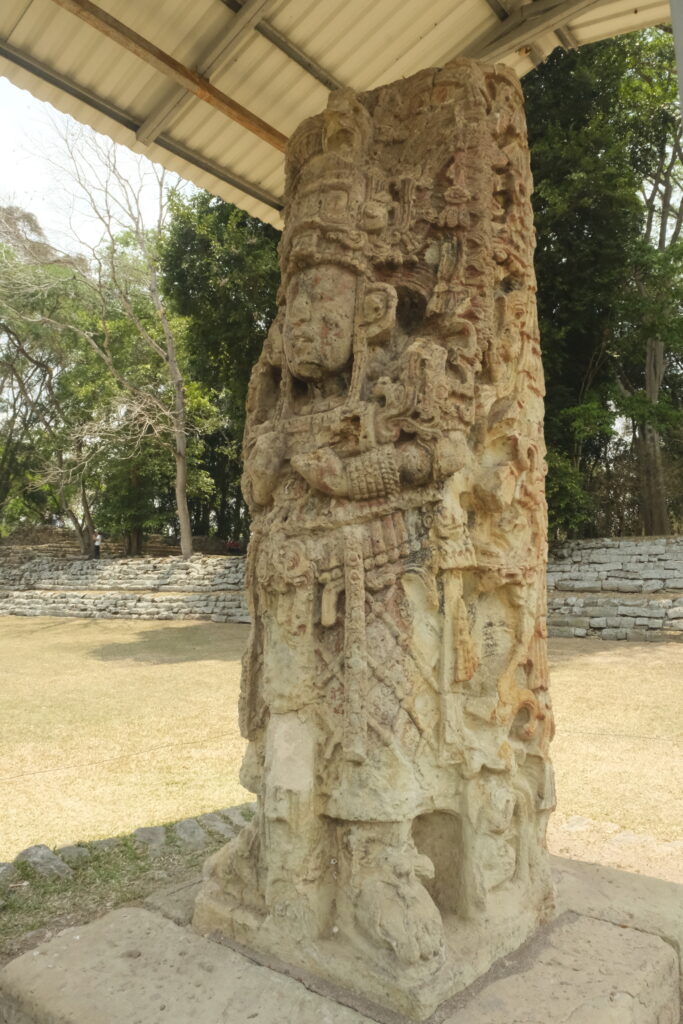
One of many intricate Mayan carvings at Copan.
Martin was our guide in the Ruins, and he was a walking encyclopedia on not only the history of Copan, but also the ancient Mayan civilization. We learned more from Martin than we had from all other guides in the other Mayan sites we’ve visited over the years. We learned that the Mayans were structured politically via a polycentric model, similar to that of ancient Greece with its city-states, and unlike ancient Rome and its monocentric model with a king, then a senate, and finally an emperor. My curiosity piqued while learning in Guatemala that there were 17 different Mayan languages still spoken in Guatemala; in fact, villagers on the north side of Lake Atitlan spoke a different language than villagers on the south side, and they could not understand each other, which blew my mind. All of this made sense once I understood the city-state nature of the ancient Mayans.
We stayed at an old hacienda that has been beautifully preserved, with gorgeous grounds, called Hacienda San Lucas, which was just outside the village of Copan Ruinas on a hill with a view over the village and ruins of Copan. We saw lots of birds here, and slept and ate well. There was even a small old Mayan ruin here, where ancient Mayan women went to give birth, which we hiked to one day.
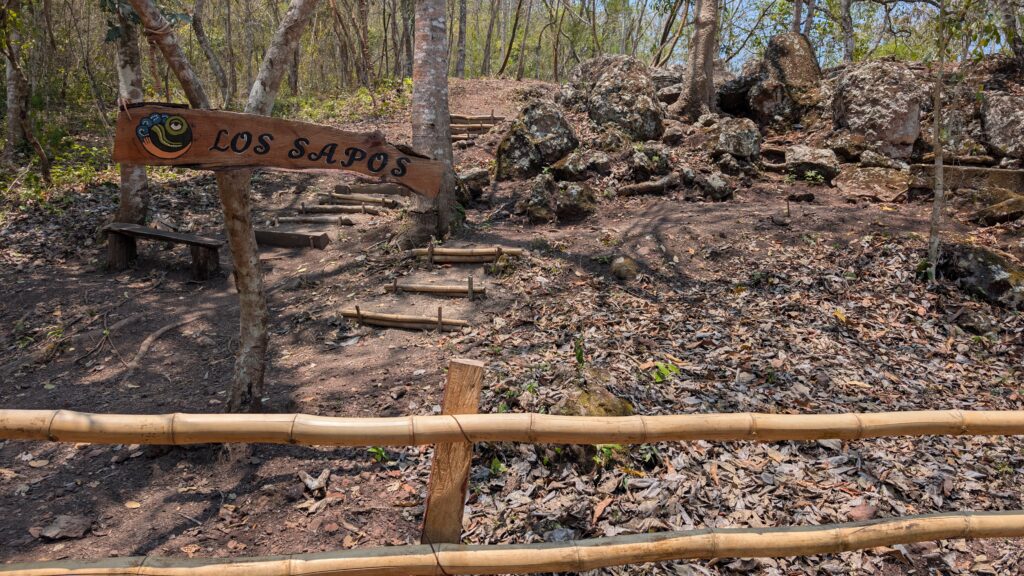
Ancient Mayan maternity ward, which is on the Hacienda San Lucas property today.
From Copan, we hired a driver to drive us the 8 hours to La Ceiba on the Caribbean coast, where we’d catch a ferry to Utila, the first of the Bay Islands we’d visit. There are no tourist shuttles running that route these days, and we did not want to take a bus as we’d have to lug all our stuff around when changing buses in a city we didn’t think was totally safe, plus it would add a few hours to the already long trip. Our driver had been recommended by Robert of Gringo Tours in El Salvador, and he was a wealth of knowledge, which made the drive more enjoyable.
Utila is a small island that is famous on the backpacker trail as the place to learn to scuba dive, with plenty of partying at night. After the dogs and fireworks of Lake Atitlan, we wanted to stay somewhere very quiet, so we stayed on the north side of the island, right on the beach where we had great views with almost no one around. Denise had to work a bit, so I caught up on my books and just hung out, watching and listening to the waves. We had rented a golf cart to get around the island, which was both fun and necessary as we were staying a ways out of the only town on the island. We didn’t even snorkel, and we only did a refresher dive here so we’d be ready to dive in Roatan, so we can’t speak to the diving here but we’ve read that Roatan is better. For the record, although Utila advertises that you can see whale sharks here, there have been very few sightings in the past 3+ years as they are not coming this far south any more. That was a bummer as we had hoped to snorkel with a whale shark, but oh well, we had a nice time anyway.
Months before, I had given my college friend Arnt, who lives in Norway, an open invitation to join us wherever he wanted to. Diving in Honduras, and potentially seeing whale sharks on Utila, sold him on the idea but after thoroughly scouring the internet, we only found horribly long, three-segment flights that didn’t make sense for a week’s stay. To my great surprise, on May 5 while we were on Utila, he told me he hadn’t given up on the idea. The next day, he bought his flight! I hadn’t seen him in six years, so this was the perfect end to our Central American adventure. We had rented a three-bedroom Airbnb that was next door to the dive shop we wanted to dive with on Roatan, so we had plenty of room. And lots of fun.
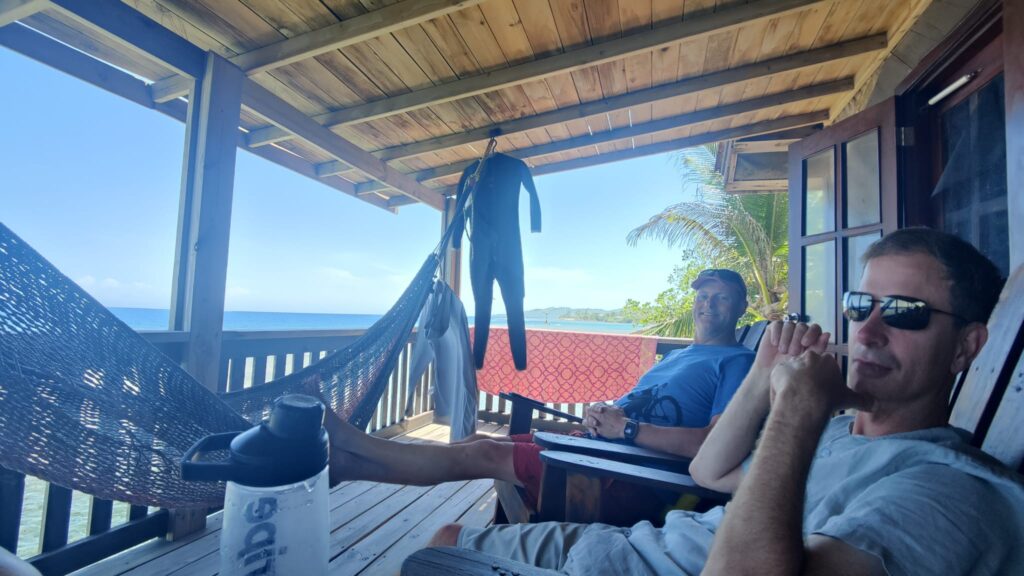
Arnt and Peter on our deck in Roatan.
Roatan is an interesting place, if not typically so. There is an indigenous culture there, but it seems a little watered down. Indeed, the whole island didn’t feel particularly Central American at all, but more Caribbean, which obviously makes sense. While not a knock itself, I think it was the tourist influence that gave it the watered down feel to me. There was a lot of construction going on and the cutting down of forests for more resorts and condos and things. On the other hand, it is easy to get to with direct flights from Miami and Houston, it is tropical, and they mostly speak English. The views are stunning, especially when viewed up higher on the island’s hills and looking out at the clear water, seeing the reefs below you.
We had been looking forward to the activities on Roatan for quite some time, that being in and on the water. Snorkeling and scuba diving were the order of the day and on one particularly memorable snorkel, and while Arnt and I were off looking at something else that turned out to be significantly less interesting, Denise had a large spotted eagle ray swim right under her about 8 feet below, approaching from behind so she didn’t see it until it was directly under her and then swam ahead of her. It then made a wide, graceful circle before coming back to check her out from about 5 feet away before gliding off. She claimed to have been holding her arm above the water waving us to come over while the rest of her kept an eye on the ray, but we missed that and sadly I can’t recall what we were looking at instead. The video above may or may not have been the same ray, but it was about that size. Pretty big! Note that although eagle rays have a large tail that looks like a stinger, they are not stingrays, so are perfectly safe to be around.
The diving was good, but because we were staying where the locals live, the reef is fished. There were some fish, but not nearly the number we had seen in Grand Cayman. However the sponges were amazing, and the coral was very good in spots. All the dives were wall dives and we did see lobsters hanging out in nooks and crannies, etc. It was good to have gone diving there, but I can’t see returning. Too many other places to go!
Honduras and its Bay Islands were the final whistle stop on our 2024/2025 winter escape. We’re posting this from Seattle where summer is attempting to start. We’re currently planning to return to places south again next winter (we’re thinking Brazil, Colombia, Panama and maybe Belize). In the end, and it could very much be due to specific reasons that would not necessarily repeat themselves, including the month we were there, and what we were able to do in the short time we had, we’d say Panama was our overall favorite. Probably because it had a great mix of first world amenities, good infrastructure, and a large variety of things to do and see, plus exotic enough to keep us engaged. Panama City is a first-world city for all practical purposes and a great place to base yourself as there is a national airport with short flights to several areas of the country. That said, all of the countries we visited had more similarities than differences, but each had enough uniqueness that we wouldn’t have skipped any of them (other than San Juan, Costa Rica, but we…probably…wouldn’t skip Costa Rica completely, just prepare for a less authentic experience and lots of American tourists).
Categories: Uncategorized

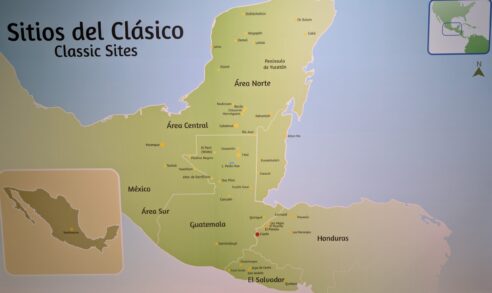
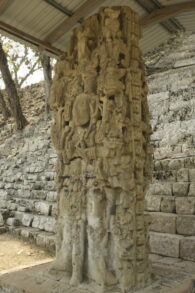
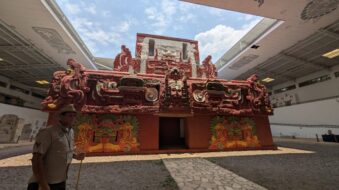
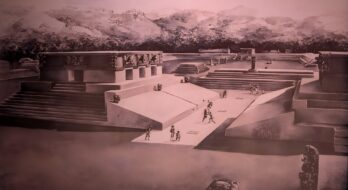
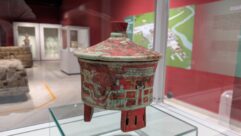
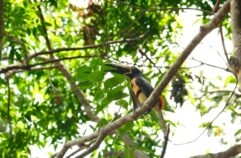
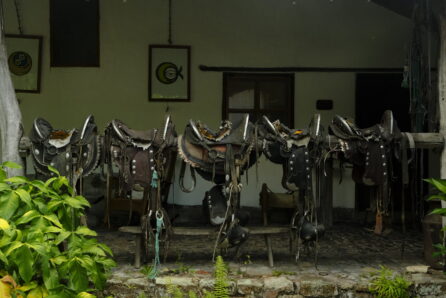


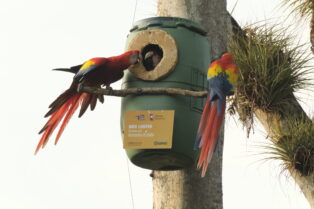
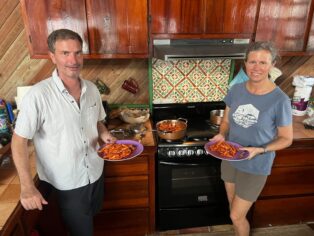

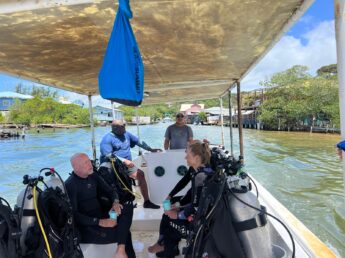
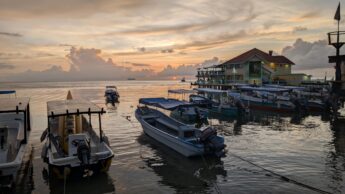
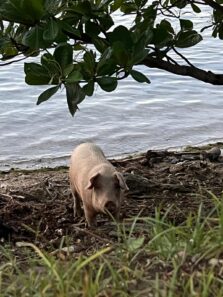
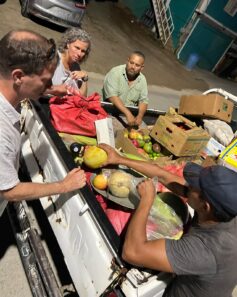
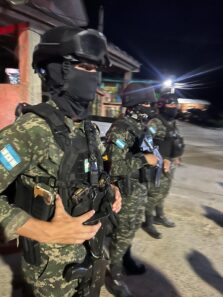
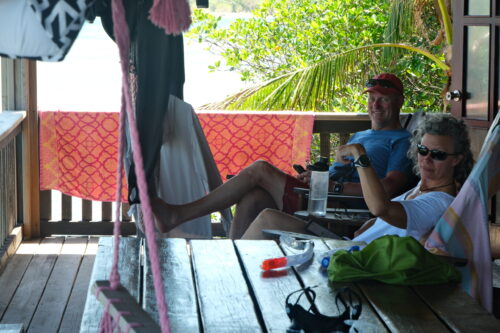
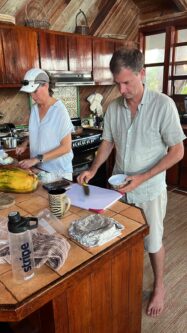
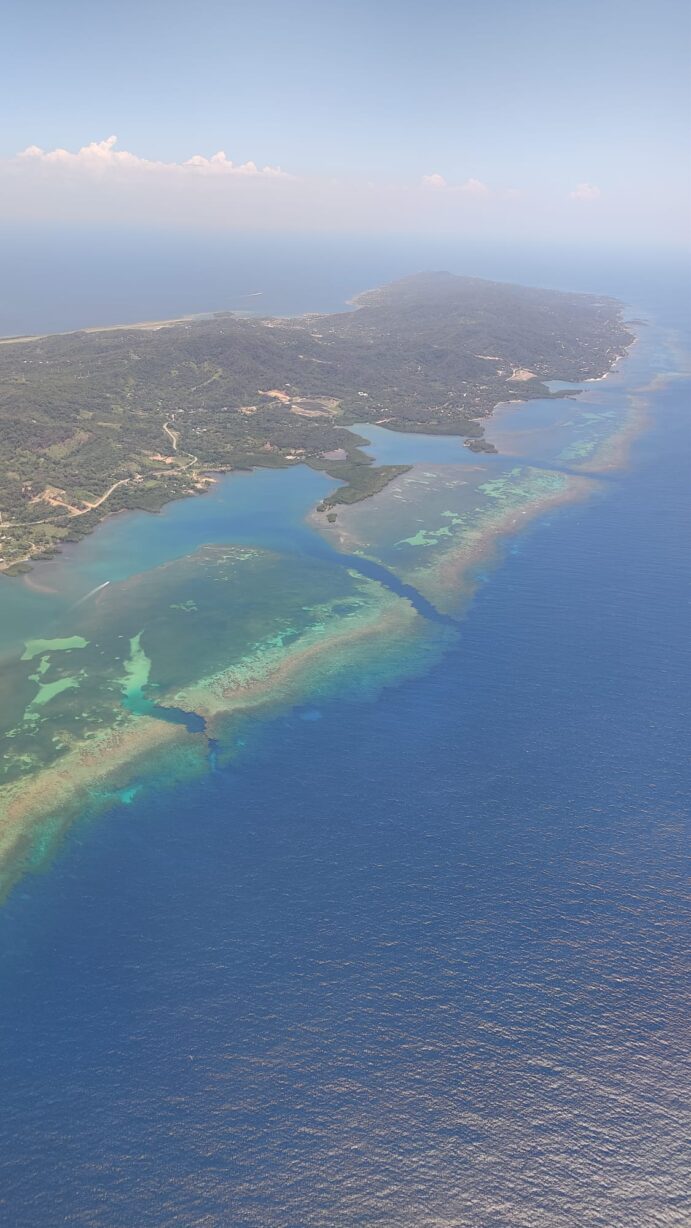
Well done you two! What a triumph to package work, adventure, travel and learning all together.
What an amazing adventure you had!!! Thank you for doing the blog! I traveled along with you, experiencing a unique and informative trip!!